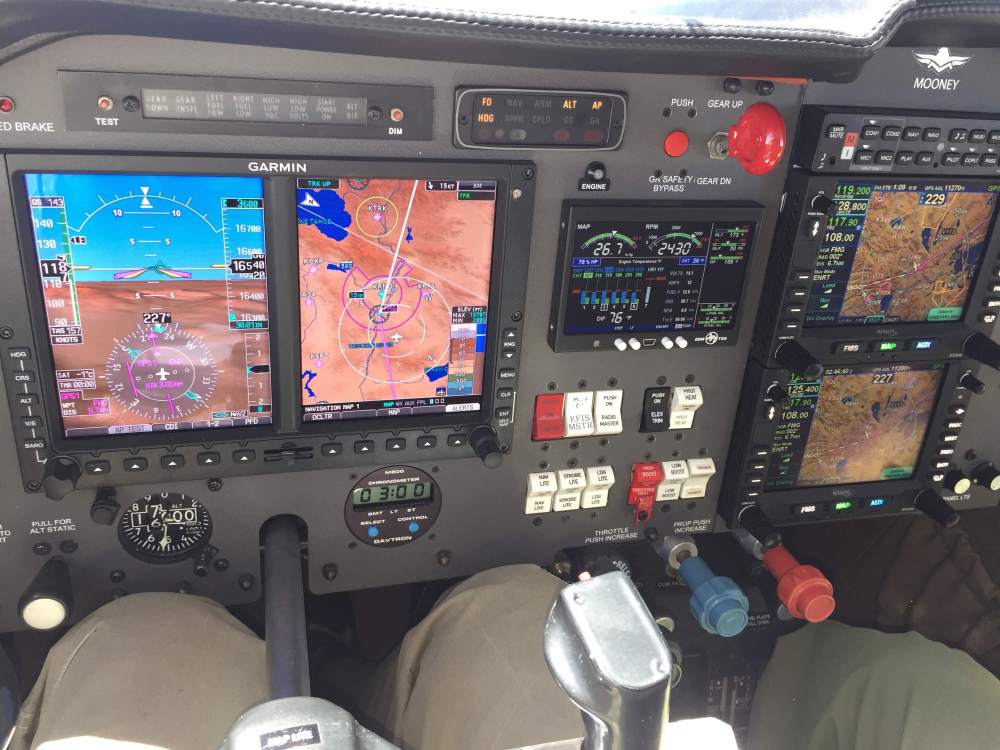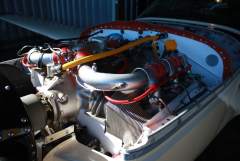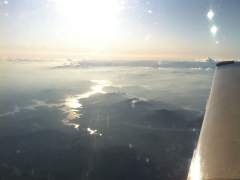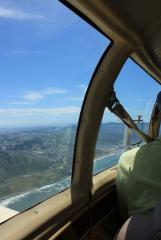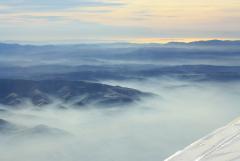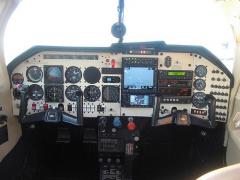
231BB
Basic Member-
Posts
30 -
Joined
-
Last visited
Content Type
Profiles
Forums
Blogs
Gallery
Downloads
Media Demo
Events
Everything posted by 231BB
-
Can't decide between 1986 M20J and 1980 M20K
231BB replied to Wingover's topic in Modern Mooney Discussion
My M20K has been a solid and reliable performer with reasonable maintenance expense over 18 years of ownership. I love the flight envelope options afforded by the turbocharger, and I would never buy a NA Mooney after experiencing the benefits of flying in the mid-teens. -
-
Good point on meteorites. It's like stalactites vs stalagmites, I can never get them straight. I should have remembered the Gloster Meteor, that sounds sexier than the Gloster Meteorite.
-
From the album: #231BB's album
-
Discussion on the Continental engine in the 231
231BB replied to NotarPilot's topic in Modern Mooney Discussion
On the low end of the scale, a TCM Cylinder Kit runs about $1370 and include rings, piston, valves, gaskets http://www.aeroinstock.com/products/346--thru-360-Series/5843/0/product_cat/index.html Add labor and a few additional parts. Once the baffling, intake and exhaust pipes and fuel lines are removed, it's not much more time to replace one cylinder vs 3 on side, or 6 all together. -
http://en.wikipedia.org/wiki/Thermal_expansion α = 1 V
-
From the album: #231BB's album
-
OK last entry on the subject: Lever cold = Tight Lever hot = Loose (as in off, in my hand, not connected to shaft) Landed. Tightened set screw with Allen wrench purchased in local hardware store (GA stimulating local economy). Alive today. Non issue. End of story. Hmm, jetdriven, 1493 posts I see in <1 yr.
-
Quote: Magnum "Zuverlässigkeitsüberprüfung"
-
In my aircraft the lever is cast metal. Didn't ignore it, it just didn't reveal itself as an issue until it got scorching hot from the heater. I didn't want to jimmie over to the other tank in flight, reasoning that the greater danger was in trying to change tanks with a slipping lever and having the fuel selector shaft get stuck in mid position between right and left. Over the Sierras, small things take on a little more importance. It was a non-event, but it's just curious how things decide to fail. M20K/KCCR
-
Hangar vs Tiedown,,,,,,,,,,,justification
231BB replied to gregwatts's topic in Modern Mooney Discussion
For once California is cheaper! I pay $365 30 mins from San Francisco, CA. Although the weather is very mild and generally dry in this area, I wouldn't want to leave the airplane out. Things rot faster outdoors, I don't care how good a cover is. I also do a fair amount of work/pampering myself on the aircraft, as well as owner assisted annuals. This saves me a BUNDLE, has allowed me to know my aircraft better, and encourages me to perform PMT (milspeak for "preventive maintence technology"). Plus it's a great "Man-Cave". If you can afford it, I would say absolutely yes. M20K/KCCR -
InfoRequest: coupler assembly 635796 / Continental
231BB replied to Swissmooney's topic in Modern Mooney Discussion
Contact: http://www.qualityaa.com/aircraft-alternator-drive-couplings I have a remanufactured coupler that cost about $600+(as of Jan 2011) Reman'd Alt. couplers had some problems in years past with failures occuring after about $200 hours (this happened to me!). Supposedly, a new rubber compound has solved this problem. New Continental OEM couplers run about $1700+, making it an unrealistic option. Good luck! M20K/KCCR -
The fuel selector on my K model got pretty hot one morning in mid winter flying into Truckee airport near Lake Tahoe. I had the heater full on; it was very cold at altitude. As I was about to change fuel tanks, the lever came off. The set screw was just a little loose, and the heat caused sufficient expansion of the lever's collar to allow it to slip on the fuel valve shaft. So there you go, it can cause problems. And BTW, one night over the Sierras a meteorite narrowly (< 100 ft) missed my right wing. Granted, this would not have been as bad as an asteroid. M20/KCCR
-
Discussion on the Continental engine in the 231
231BB replied to NotarPilot's topic in Modern Mooney Discussion
Getting back to the original post, if you live in LA you should seriously consider a turbo. Unless you plan to fly over the Pacific, most of your flights will involve transitions over mountainous terrain. Flying a turbo in the mid to high 'teens will make mole hills out of mountains. In terms of maintainence, I agree with posters who state the importance of engine management and temperature monitoring for longevity. Power settings, mixture, cooling, and temperatures play a huge role. Several K models on my home field, operated by "enlightened" pilots, have reach TBO's without an intervening TOH. I also agree with no need to idle 5 mins on a turbo'd airplane prior to shut-down, unless you normally land with a MP >30";) This is car-think transferred to aircraft. The normal descent to landing, especially in a Mooney, requires a sustained period of low power settings. The turbo is not spooled up during this time, as exhaust gets bypassed through the wastegate. Temps begin to increase after landing, enroute to your tie-down. Learn about your powerplant by performing a few owner assisted annuals if you can. Study turbo systems and internal combustion theory. The engines are a little more complex, but like anything else, if you deal with it everyday it will become second nature. Needless to say, I'm a very happy 231 owner, and with today's prices on K models, I can't think of a good reason to fly a normally aspirated Mooney out West. Happy flying! M20K/KCCR -
Vref, It's great to hear about Mooney's flying in Europe. I would enjoy reading your comments on flying in Europe, +/-'s, typical expenses, and how the public perceives General Aviation. Congratulations on getting your J flying! 1982 M20K KCCR
-
From the album: #231BB's album
-
From the album: #231BB's album
-
From the album: #231BB's album
-
Guess How Long Mooney Says To Get A Rocker Switch?
231BB replied to HopePilot's topic in Modern Mooney Discussion
Honeywell TP rocker switches (check Digikey.com), engraving for particular application: http://aircraftengravers.net/aircraft/rocker_switches.htm OF : '82 M20K -
For a turn key solution, with a high attention to detail, talk to Buchanan Aviation Services in Concord, CA (KCCR). You can see some pictures of their work under 231BB Photo gallery. Buchanan will strip the interior down, powder coat all interior metal components in a complementary color, cover panels, install door welt trim, fabric trim carpets, etc.
-
There in lies the rub. How one flies (fries?) the engine has much to do with its longevity. How often, how hard, how the throttle is handled, and how meticulously the baffling is maintained. Although some lore seems to point to early top overhauls on some TSIO360's, I've always wondered how people are treating these engines. Do these engines all have multi-probe temp monitoring, are they regularly run, and is the pilot pushing 39" MP on a 90 kt climb all the way to 15,000ft? If the MTBF for a TSIO360 is indeed 1000 hrs, why would TCM certify them for an 1800 TBO? I have seen other Lyc & TCM turbo'd engines fried more by pilot mismanagement and poor maintenance/temp monitoring. Because the boost is there doesn't mean you have to use it all the time - I agree this will shorten any engine's lifespan. So short of buying 4 extra plugs for cylinders 5&6, I haven't seen the added expense everyone talks about. And yes, I have a TSIO360LB with over 1000hrs, still with uniform compressions in the 70's and minimal oil burn. CHT's run 300ºF or less in cruise (65% power) and low 300's at cruise climb. I do not run LOP on WOT. Another pilot on the field with an M20K, also a believer in smooth engine management, saw 1800hrs+ on his first engine, and is well past 1000 hrs on his second with no sign of cylinder wear. Sure, this may be my OWT, but one OWT deserves another.
-
I can't understand the thing about the higher cost of a turbo. Everyone seems to repeat that like a mantra. With an 1800 TBO, you may have to rebuild the turbo once, and maybe a section or two of exhaust. Perhaps $3000 to $4000, less if you're partaking in the maintenance. But if you're flying even 100hrs/year, which for most GA pilots is a lot now, that expense is spread out over 18 years! Your fuel burn alone would cost you over $5K annually (12 gph @$4.50/gal, less if LOP at 9 gph) - this is what we should focus on. If so, then you'll realize the M20K is probably the most efficient 4-seat piston aircraft in the GA fleet. With the added utilities of cruising high altitude operatins, speed, and the best MPG on the market, why would anyone not want a turbo'd Mooney?
-
From the album: #231BB's album
-
Speed brake effectiveness appears to diminish at higher angles of attack, and using them through out the flair perhaps requires only a little more back pressure on the yoke. Having them out for landing does give one yet one more thing to clean up in case of a balked approach, so I prefer to use them sparingly on final.


